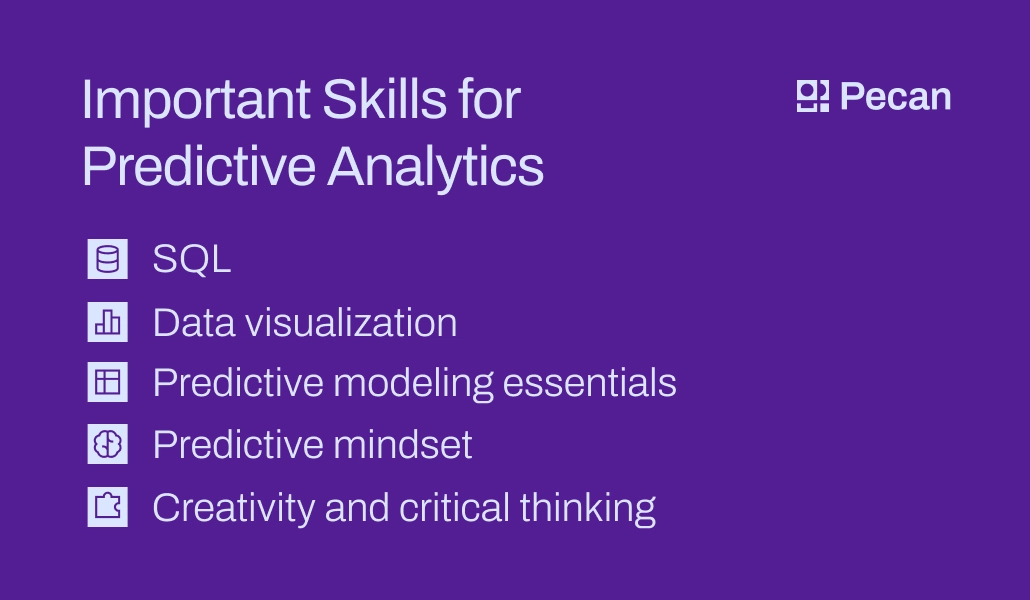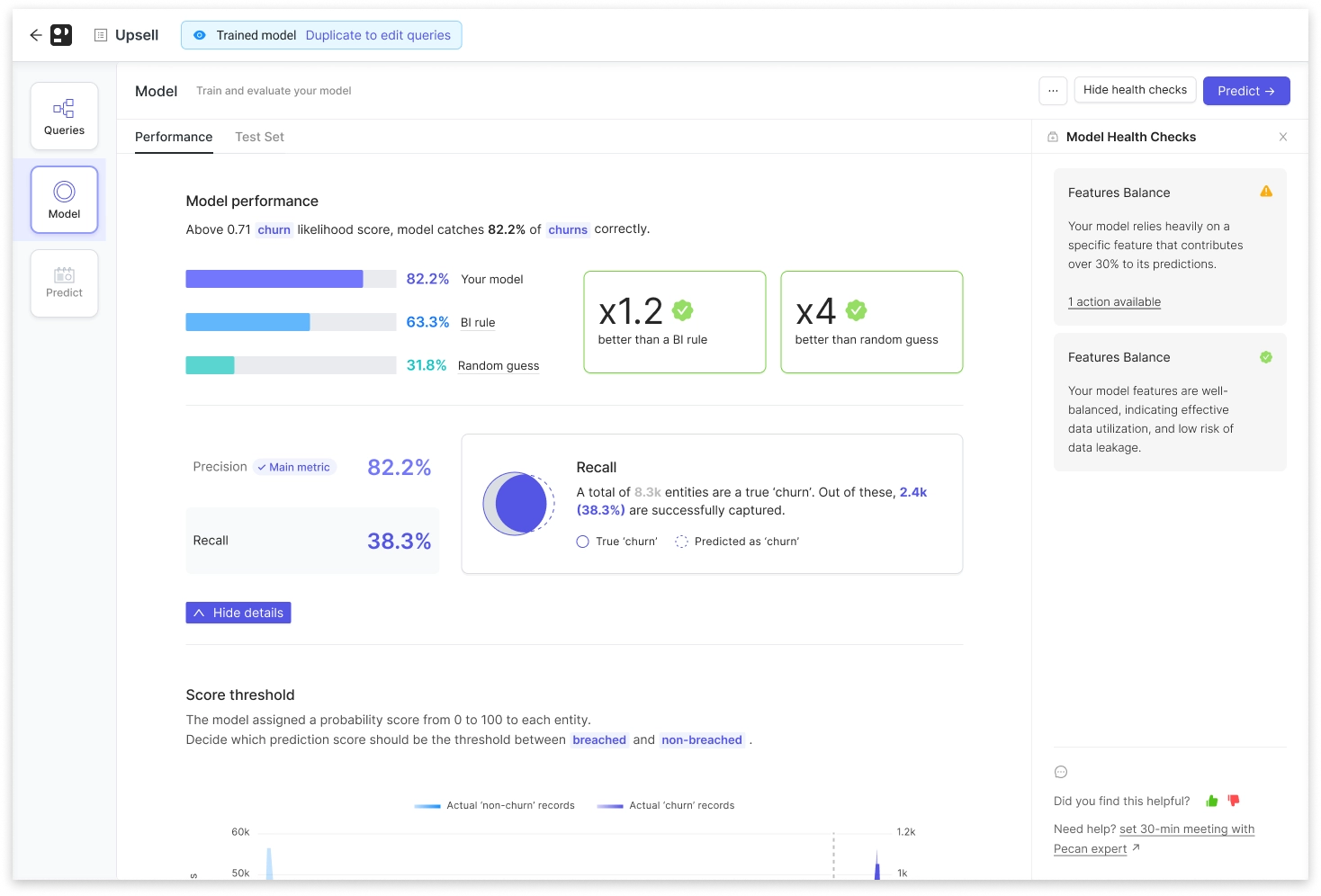In a nutshell:
- Predictive analytics skills have evolved to be more accessible and less daunting.
- Skills needed include SQL, data visualization, predictive modeling essentials, a predictive mindset, and creativity/critical thinking.
- SQL is essential for connecting to databases and building predictive models.
- Data visualization is crucial for communicating predictive model details to a non-technical audience.
- Having a predictive mindset and combining creativity with critical thinking are key for successful predictive analytics.
What skills do you need to do predictive analytics? If we made a list of the skills needed for predictive analytics just 5 years ago, the result would have been pretty long then: coding, statistics, computer science, and more. Fortunately, the list is now shorter and less daunting.
At the same time, the outcomes of using today’s more accessible predictive analytics continue to evolve. This innovative technology is more powerful and beneficial to businesses than ever.
It’s now possible to do predictive analytics with skills that are widely available among data professionals and business leaders. Let’s run through the capabilities needed. We’ll also explore some best practices that can help you take on a future-driven perspective.
The skills you'll need to excel at predictive analytics
Skill 1: SQL
Did you know SQL has been around since the 1970s? Yet this vintage language continues its reign as the dominant tool for connecting to databases and retrieving data. This lingua franca of data is fundamental to platforms like Pecan, where it can be used to build predictive models.
We’ve elevated SQL from a humble tool of data retrieval to a predictive powerhouse. You’ll never look at SELECT * the same way again.
Skill 2: Data Visualization
The ability to represent data visually is a critical part of successful data professionals’ toolkits. In addition, it’s also extremely important to be able to represent predictive models’ details visually.
For example, you’ll want to be able to communicate models’ predictions, feature importance, decision thresholds, and performance metrics to a less technical audience. For that reason, we’ve included visualizations in the Pecan platform’s dashboards to help users interpret their modeling results.
A Pecan model performance dashboard
Among other visualizations, Pecan uses Venn diagrams to highlight how selecting different decision thresholds for classification models affects the model’s predictions.
Skill 3: Essentials of Predictive Modeling
Due to the advent of automated predictive analytics platforms, data professionals don’t need to master every nuance of the math and data structures that underlie predictive models. However, they do need to understand the overall concepts.
For example, what are classification and regression models? What do accuracy and precision mean in the predictive context?
A firm grasp of these key ideas is important to guide your modeling efforts and use results effectively. (Check out our accessible guide, The What and Why of Predictive Analytics, to master the essentials quickly.)
Skill 4: Predictive Mindset
BI and data analysts can now use historical data and accessible, AI-powered predictive analytics platforms to predict what’s most likely to happen in the future. With this shift comes a new way of thinking about data’s potential — what some call the “predictive mindset.”
Instead of going down “rabbit holes” in historical data to pursue insights about the past, analysts can now go through “wormholes” to time travel into the future with predictions.
What new future-focused questions should be explored for your business’s benefit? Without a doubt, the possibilities are wide open.
Skill 5: Creativity and Critical Thinking
Creativity helps data professionals and business leaders come up with new possibilities to explore with predictive analytics. But at the same time, they still need to think critically about what they choose to pursue and how they ask questions.
To be sure, thinking critically with and about data is a skill of its own, especially through the lens of that predictive mindset.
While practice certainly helps, having that essential knowledge of the basics of predictive modeling will assist teams in developing the questions they want to ask. In addition, this approach will help them decide which data will be most relevant to answering them.
We hope our 3-Minute Nutshell posts help you get a handle on the potential of predictive analytics for your most important business outcomes. Let us know if there are questions you’d like to see us answer in future posts!
Ready to see what AI can do with your business’s data? Get in touch, or start experimenting with AI today in our free trial.






